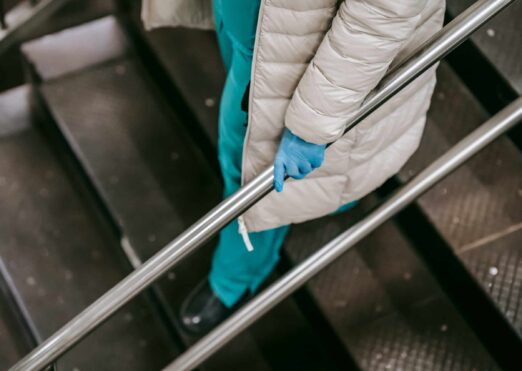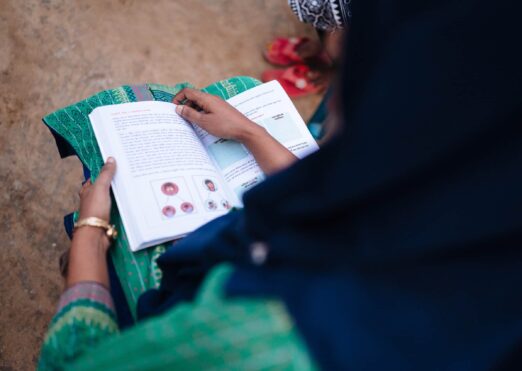Slavery hasn’t gone away during lockdown
March 22, 2021
Year on year the number of slavery victims found in the UK has been growing exponentially with a 52 per cent increase from 2018 to 2019. Not in 2020. This year was different.
Last week, the Home Office published their annual modern slavery statistics. In 2020 there were 10, 613 potential victims of slavery found in the UK, 47 per cent of them children predominantly British (58 per cent). The stagnation of numbers could be a reason for celebration. Not so in the case of modern slavery. Here’s why.
The official statistics record the number of victims referred into the National Referral Mechanism (NRM) – the Government’s system to identify and support slavery victims. The fact that this year we have not seen an increase in numbers, sadly, doesn’t mean that the number of instances of slavery is falling. What it means is that modern slavery, already known to be a hidden crime, has been driven even further underground by the COVID-19 pandemic, leaving potentially thousands of victims undetected.
Lockdown has added pressure to already-stretched local authority services and police; school closures and the decrease in social services has significantly diminished the chances to identify victims; and the rules we have all have had to follow have provided far fewer opportunities to spot and report any suspicious behaviour. Criminals, however, have been fast, opportunistic and have managed to use this crisis for their advantage.
It is helpful to dissect the NRM figures and consider them alongside the evidence we are seeing emerging from around the country. According to the statistics, the number of victims of sexual exploitation dropped dramatically. In the first half of 2020, the number of victims identified fell by a staggering 80 per cent – the figures increased during the second half of the year, but still show much lower levels overall compared to the previous year – 1,171 cases in 2020 compared to 2, 166 cases in 2019.
Similarly, the number of victims identified in labour exploitation, such as those found working in car washes and nail bars, has fallen by 68 per cent during the first six month in 2020 compared to the last quarter of 2019. Lockdowns and the resulting business restrictions make sense of this decline. Very simply, the exploitative businesses could not operate as normal and the customer base itself was restricted as so many of us were forced to stay at home. The organisations charged with identifying businesses that may be involving victims of slavery have also been impacted by the pandemic – the police, HMRC, the GLAA have had much reduced capacity to carry out visits where victims may well have been identified.
The criminals responsible for human trafficking have not stopped – they have just adapted. Take sexual exploitation. During the first lockdown, in the West Midlands (Sandwell) there was a 280 per cent increase in advertising of sexual services on adult websites with many new individuals, predominantly from Eastern Europe, appearing online. However, during the second lockdown in Autumn 2020, police found “COVID-compliant” brothels where temperature was checked automatically as clients opened the door; hand sanitizers and other measures were put in place to COVID-proof the venues with evidence of controlled and coerced nature of criminal behaviour.
This picture of adaptation has been seen elsewhere. Police officers from West Yorkshire were concerned that Vietnamese nationals from nail bars could have been moved into cannabis factories, similar to the Albanian and Eastern European nationals from car washes and other industries that had to be closed down temporarily. This change in the criminal modus operandi is reflected in the NRM figures. Exploitation of vulnerable victims for the purpose of criminal activity, including growing and distributing drugs, is now the most prevalent type of exploitation accounting for 34 per cent of all the cases, with the additional 15 per cent for criminal mixed with labour or sexual exploitation. Most of those who were criminally exploited were children (51%), predominantly boys (98%).
We should not be duped by the fact that the number of victims identified has stagnated and conclude that we are winning the fight. Far from it, it is a red flag that should prompt us into more proactive detection now that the lockdown restrictions are being eased. The pandemic has created a breeding ground for criminals who are preying on the most vulnerable of our society. If we do not act now, many more people will fall into the trap of abuse and exploitation.
What is more, official figures represent only the tip of the iceberg. Last year we estimated there could be at least 100,000 victims of slavery in the UK, which means we know of about only 1 in 10 victims at best. Make no mistake, whist the NRM numbers may have dropped, slavery is still rife and prospering in the UK.
The Government response must place victims at the centre. If action is taken now with priority given to identifying and rescuing victims, this will in turn lead to identifying the criminals responsible. The answer is not only about getting tough on perpetrators. If we focus on identifying and supporting victims properly, they will become the key to finding and prosecuting the criminals still prospering from slavery.
Criminals responsible for modern day slavery have not stopped during lockdown, they have adapted. We must too.
Tatiana Gren-Jardan
Head of Modern Slavery Policy Unit


